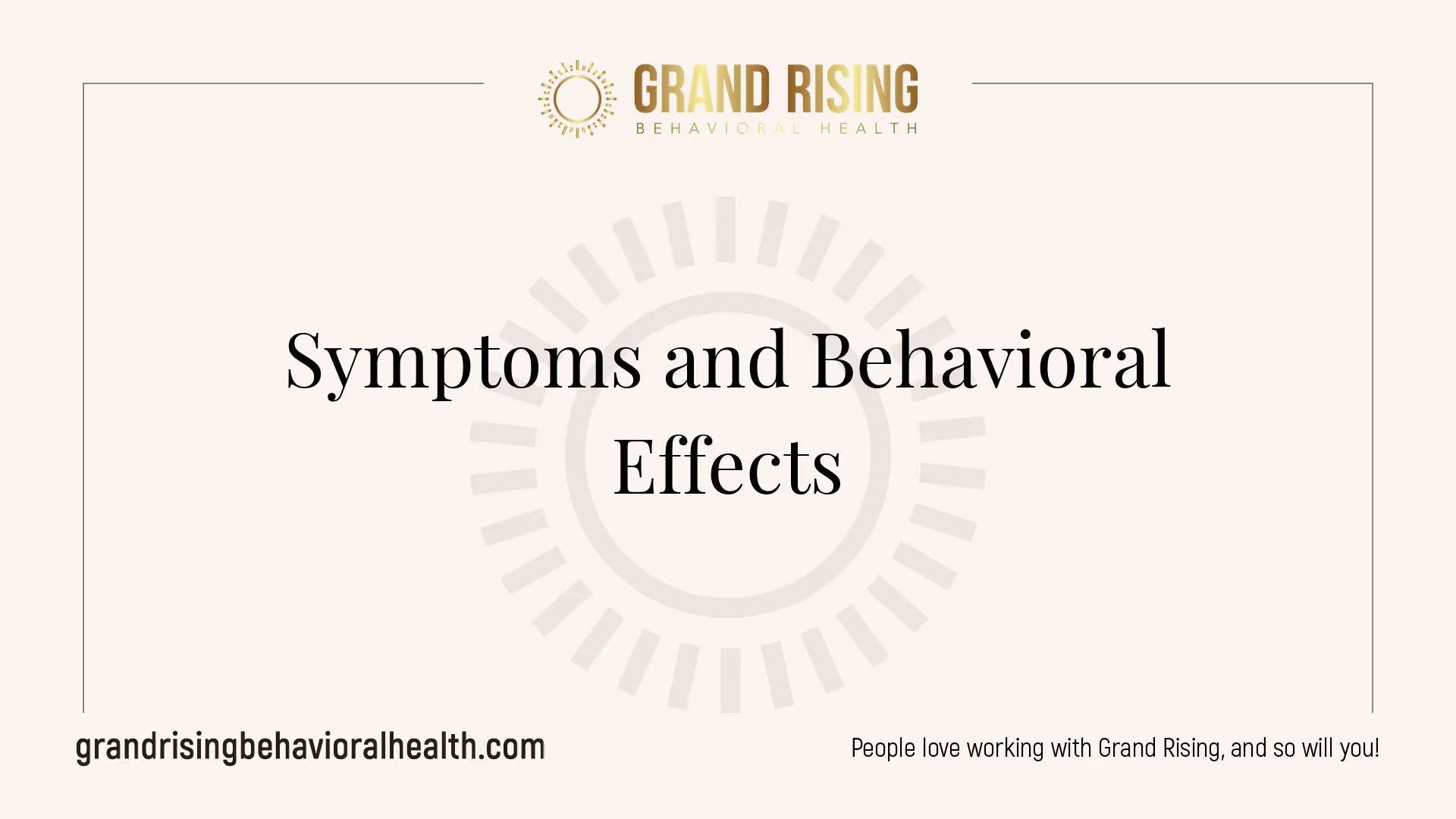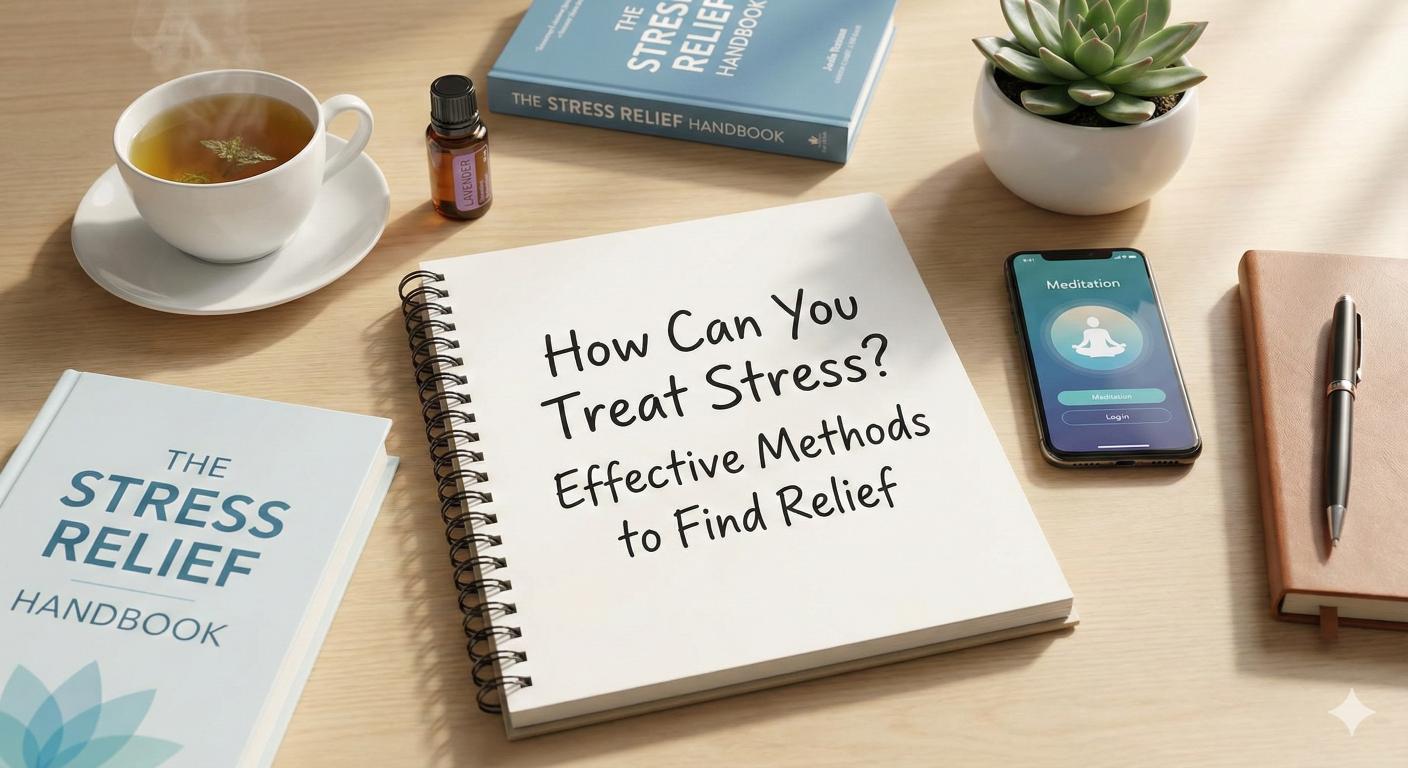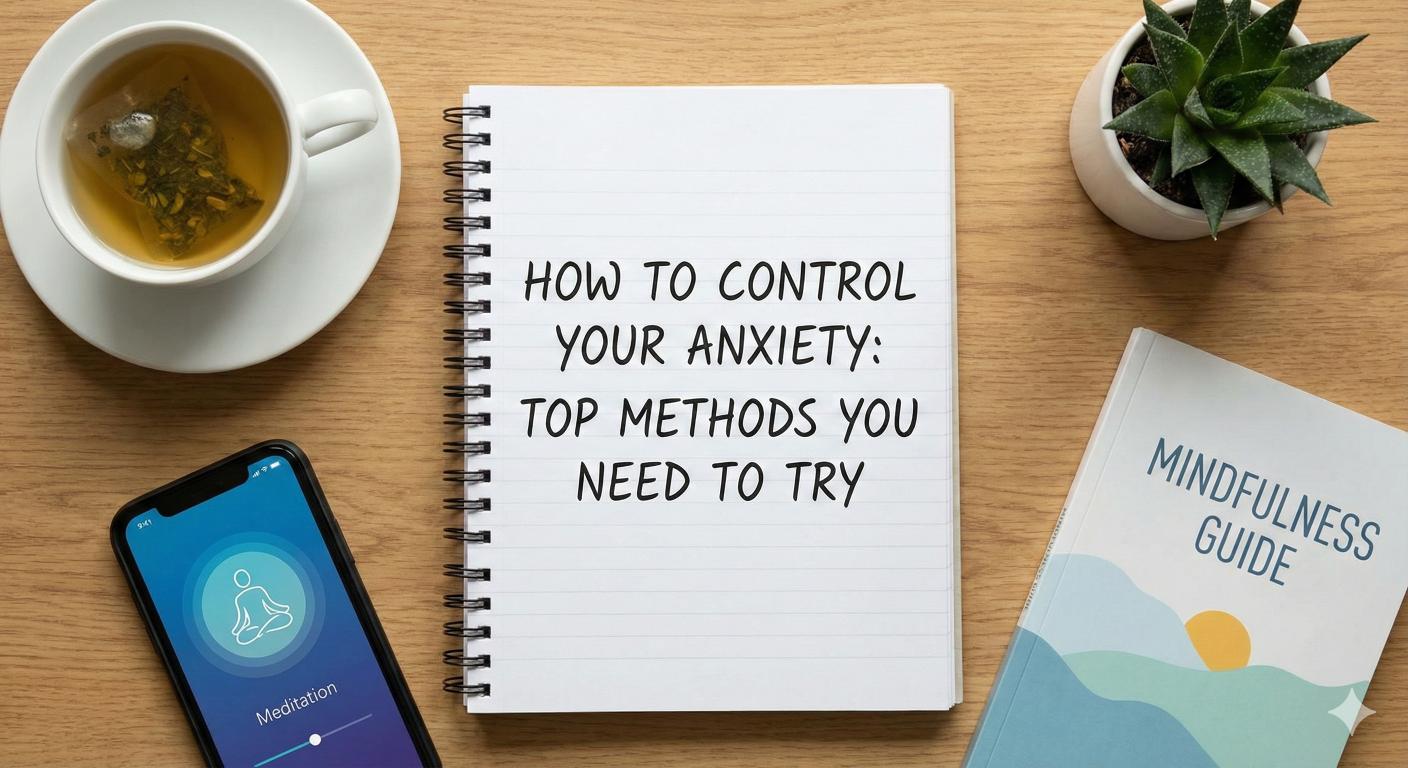Coping with Hypervigilance in Trauma Survivors
Explore coping with hypervigilance in trauma survivors with effective strategies for healing and support.


Understanding Hypervigilance in Trauma Survivors
Definition and Causes
Hypervigilance is a symptom commonly associated with various mental health conditions, especially those related to anxiety. It is characterized by a heightened level of awareness or arousal in response to feeling on guard, nervous, or worried about imminent threats. This state often develops as a result of trauma experienced in situations such as abuse, combat, or post-traumatic stress disorder (PTSD) [1].
This persistent state of alertness can lead the individual to constantly scan their environment for danger, making it difficult to relax or feel safe. Factors such as previous traumatic experiences and individual predispositions to anxiety can exacerbate hypervigilance.
Cause of HypervigilanceDescriptionTrauma from AbuseEmotional and physical abuse can lead to a constant state of readiness.Combat ExperiencesVeterans may experience heightened alertness from exposure to life-threatening situations.PTSDPost-traumatic stress disorder often manifests as hypervigilance due to survival instincts.
Impact on Mental and Physical Health
Hypervigilance can significantly affect both mental and physical health over time. The constant state of alertness leads to symptoms such as anxiety, stress, and fatigue, impacting daily life and overall wellbeing [2].
Additionally, hyperarousal, commonly implicated in PTSD, persists even years after the traumatic event. It can result in sleep disturbances—such as early awakenings, restless sleep, and nightmares—that continue despite the reduction of other trauma-related symptoms [3].
The continuous strain on the nervous system can lead to physical symptoms such as muscle tension and increased sensitivity to stressors. Managing hyperarousal is crucial, as its potential to interfere with an individual's ability to assess and respond to situations can lead to overreactions, even in non-threatening environments. For further insight into related issues, consider exploring the physical symptoms of unresolved trauma and the impact of trauma on sleep.

Symptoms and Behavioral Effects
Understanding the symptoms and behavioral consequences associated with hypervigilance is essential for coping with hypervigilance in trauma survivors. These signs often impact various aspects of a person's life and can be indicative of underlying trauma.
Signs of Hypervigilance
Hypervigilance manifests through several signs, often as a response to trauma that triggers a heightened state of awareness and sensitivity. Some of the key symptoms include:
SymptomDescriptionHeightened State of ArousalIndividuals may feel on edge and anxious in situations where others feel safe.Startle ResponseAn increased sensitivity to unexpected noises or movements, resulting in exaggerated startle reflexes.Sleep DisturbancesDifficulty falling or staying asleep due to constant alertness or nightmares.Muscle TensionChronic tension or tightness in muscles due to stress and anxiety.Mood SwingsEmotional instability, leading to rapid changes in mood, irritation, or anger.IrritabilityA short temper or low threshold for frustration, often impacting relationships.
Hypervigilance can lead to heightened anxiety, fatigue, chronic stress, and physical symptoms like headaches, which can exacerbate existing conditions such as anxiety disorders and post-traumatic stress disorder (PTSD).
Behavioral Consequences
The behavioral consequences of hypervigilance can significantly affect daily life and interpersonal relationships. Some of the notable effects include:
BehaviorDescriptionOverreacting to SituationsIndividuals may respond disproportionately to perceived threats, interpreting benign interactions as dangerous.Avoidance of Certain ScenariosMany may avoid crowded places, social events, or other environments that induce anxiety.Constant Scanning of EnvironmentsA persistent need to assess surroundings for potential threats, leading to distraction and reduced focus on tasks.Difficulty Trusting OthersHypervigilance can damage trust, making it challenging to form and maintain personal relationships.Withdrawal from Social InteractionSome may isolate themselves due to the overwhelming nature of their heightened state, leading to loneliness.
These behaviors can contribute to a cycle that reinforces feelings of fear and anxiety, making it challenging for trauma survivors to engage fully in life. Effective coping strategies are essential for addressing these symptoms and fostering a sense of safety and normalcy. Exploring resources, such as the role of mindfulness in trauma healing, can provide valuable insights and techniques.

Coping Strategies for Hypervigilance
Coping with hypervigilance in trauma survivors often requires a multifaceted approach, integrating both therapeutic and medical strategies. This section explores effective therapy approaches and medication options available to individuals managing hypervigilance.
Therapy Approaches
Therapy is a foundational method for individuals struggling with hypervigilance, particularly those affected by PTSD. Various therapeutic techniques can assist in regulating the autonomic nervous system (ANS) and restoring emotional balance [2]. Here are some of the effective therapy approaches:
Therapy TypeDescriptionMindfulness PracticesThese techniques promote awareness of the present moment and help reduce anxiety and fear associated with hypervigilance. They can involve breathing exercises and guided imagery.Somatic ExperiencingThis method focuses on bodily sensations to help release trauma stored in the body, fostering relaxation and safety.Trauma-Focused TherapyThis type of therapy addresses trauma-related thoughts and feelings. It encourages safe expression and processing of traumatic memories.
Each of these approaches aims to create a sense of safety and well-being, which is essential for trauma survivors coping with hypervigilance [2].
Medication Options
In some cases, medication may also play a critical role in managing the symptoms of hypervigilance. Common options include:
Medication TypeUsageAntidepressants (SSRIs/SNRIs)Often prescribed to help alleviate symptoms of anxiety and depression that accompany PTSD and hypervigilance.Anti-Anxiety MedicationsThese can provide short-term relief for those experiencing extreme anxiety related to hypervigilance.Sleep AidsMedications may be used to address sleep disturbances that often accompany hyperarousal, supporting better sleep hygiene.
Combining therapy with medication can often provide the best results for trauma survivors experiencing hypervigilance. Establishing a plan with healthcare professionals is essential for tailoring treatments to individual needs.
Individuals dealing with hypervigilance might also benefit from exploring techniques like mindfulness, which can complement their treatment strategy [4]. Addressing related issues such as sleep disturbances (the impact of trauma on sleep) and self-blame (addressing self-blame in trauma survivors) can further enhance the effectiveness of their coping strategies.

Recommended Coping Techniques
Coping with hypervigilance in trauma survivors can be challenging. However, engaging in grounding and relaxation methods, along with making lifestyle adjustments, can significantly help in managing symptoms and promoting well-being.
Grounding and Relaxation Methods
Grounding techniques are effective tools that help individuals stay connected to the present moment. These methods can redirect attention away from anxiety and stress caused by hypervigilance. Key techniques include:
Grounding Techniques Table
TechniqueDescriptionDeep BreathingInhale deeply through the nose, exhale slowly through the mouth. Repeat for several minutes.5-4-3-2-1 TechniqueIdentify 5 things you can see, 4 things you can touch, 3 things you can hear, 2 things you can smell, and 1 thing you can taste.VisualizationPicture a safe space or a calming scene in detail to evoke feelings of relaxation.
Lifestyle Adjustments
Making strategic lifestyle changes can contribute to better overall emotional and physical health. Here are some practical adjustments for those experiencing hypervigilance:
Adopting these coping mechanisms along with grounding and relaxation methods can aid individuals in regaining control over their experiences and promote healing. For strategies related to mindfulness, see our article on the role of mindfulness in trauma healing.

Recovery Process for Trauma Survivors
Understanding the recovery process is essential for survivors of trauma, especially those coping with hypervigilance. This journey requires not only awareness but also strategies that support healing over time.
Time and Patience
Recovery from traumatic experiences is not immediate; it demands time and patience. Recognizing that healing is a gradual process can empower individuals navigating through trauma. According to the VA National Center for PTSD, acknowledging the length of recovery can help survivors regain a sense of control over their situations.
It is important to understand that individuals who have endured distressing events require time, rest, and support to heal. For trauma survivors, understanding this can lead to a more compassionate approach towards their own healing journey. Family and friends can play a crucial role by offering reassurance and support, while also avoiding pressure to "move on" too quickly [7].
Recovery AspectConsiderationEmotional ProcessingTakes time to understand feelings and reactions.Building TrustRebuilding trust in others is gradual.Establishing SafetyCreating a sense of safety may take longer than expected.
Positive Coping Actions
Adopting positive coping actions is vital in fostering resilience among trauma survivors. Engaging in self-care practices and developing healthy coping strategies can guide individuals towards recovery. Here are several effective strategies:
By acknowledging the importance of time in the healing process and implementing positive coping actions, trauma survivors can better manage hypervigilance and foster a healthier mindset. For further understanding, resources such as addressing trauma in relationships and navigating trauma-related guilt can offer additional support and strategies.

Community Support and Practical Assistance
Support from friends, family, and the community plays a significant role in helping individuals cope with hypervigilance and other symptoms associated with trauma. There are various ways to provide emotional and practical support to trauma survivors.
Providing Emotional Support
Emotional support is crucial in the recovery process for trauma survivors. It is important to accept that individuals who have gone through a distressing or frightening event need time, rest, and support to heal. Offering reassurance while avoiding pressure to move on too quickly can significantly benefit them [7].
Encouraging survivors to talk about their experiences can be essential for their healing. Creating a safe space for them to share when they are ready promotes a sense of control over their emotions and reactions. Active listening can help trauma survivors feel validated and supported, contributing to their emotional recovery.
Emotional Support StrategiesDescriptionActive ListeningAllowing survivors to express their thoughts and feelings without interruptionOffering ReassuranceLetting them know that their emotions are valid and they are not aloneEncouraging ConversationPrompting discussions about their experiences, if they are willing
For more information on the importance of addressing trauma in relationships, consider reading addressing trauma in relationships.
Practical Aid for Trauma Survivors
Practical assistance is equally important in alleviating the burden trauma survivors face. Offering help with daily tasks can reduce stressors, allowing individuals to focus on their emotional healing. Such support can include preparing meals, running errands, or helping with household chores.
Here are some examples of practical support that can be provided:
Practical Assistance OptionsDescriptionMeal PreparationCooking and delivering meals to provide nourishment without stressErrandsHelping with grocery shopping, appointments, or other essential tasksHousehold HelpAssisting with cleaning or organizing to ease their workload
For insights on understanding the physical symptoms of unresolved trauma, visit our article on physical symptoms of unresolved trauma.
Both emotional and practical support play a vital role in the recovery process for trauma survivors. Providing a combination of these supports not only fosters a sense of community but also empowers individuals to cope more effectively with their experiences and symptoms of hypervigilance.
References
[2]:
[3]:
[4]:
[5]:
[6]:
[7]:
[8]:
More Resources
A team ready to start your journey.
Get in touch — today.
We are a safe space – a haven for exceptional individuals to receive discreet, personalized, in-person treatment and care.
.avif)










